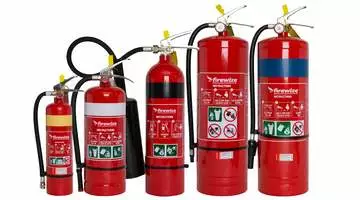Australian Standard AS 1851 sets out the requirements for the routine servicing of fire protection systems and equipment including portable fire extinguishers.
The 2012 edition of the Standard requires portable fire extinguishers be discharged (Section 10, Table 10.4.3), inspected, consumable items replaced and then pressure tested at 1.5 times the working pressure or 2 MPa, whichever is the greater every 5 years from the date of manufacture.
The date of manufacture of a portable fire extinguisher can be found stamped or printed into the skirt of the fire extinguisher by the manufacturer.
A hydrostatic pressure test involves discharging the contents of the portable fire extinguisher, conducting an inspection of the components, filling the extinguisher with water then pressurising the cylinder to the required pressure.


